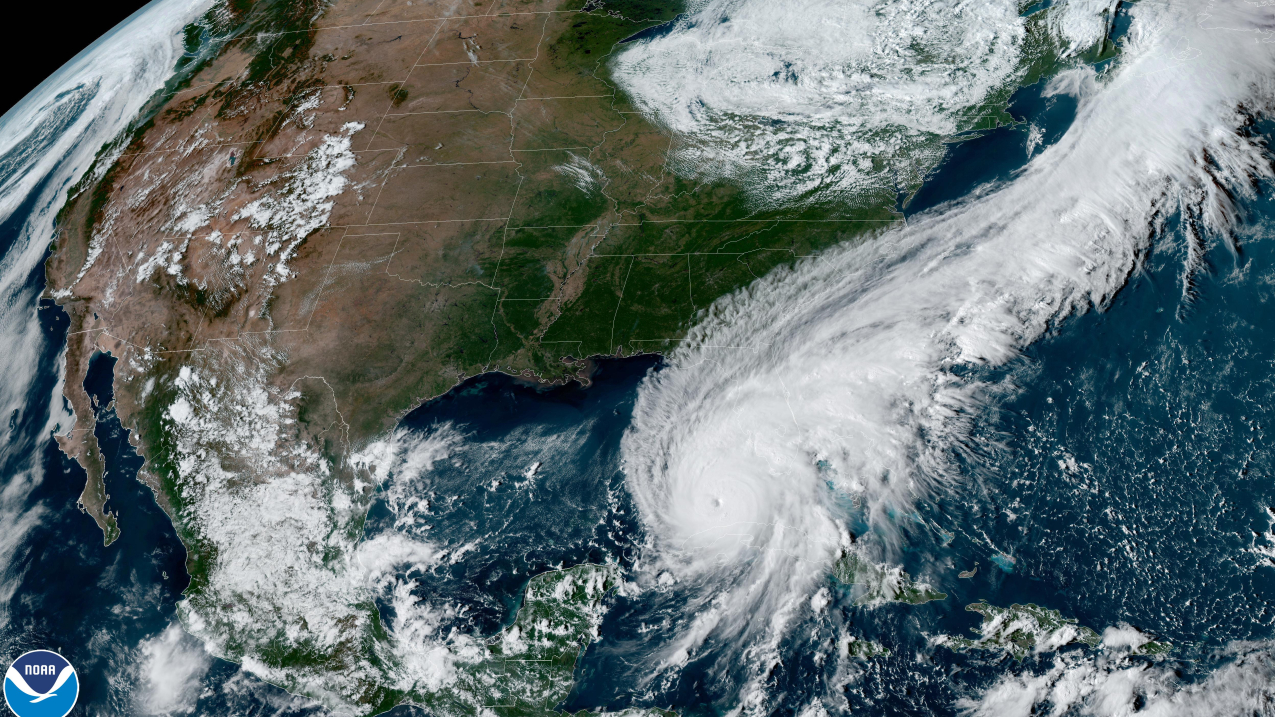As a Category 4 storm, Hurricane Ian made landfall on the west coast of Florida on Sept. 28, 2022.
Photo courtesy of the National Oceanic and Atmospheric Administration
By Riley Benson
It’s hurricane season in Florida again, which means preparations for keeping safe in case of a storm have begun for residents, businesses and colleges.
For the past two years, on-campus residents of the University of South Florida St. Petersburg have been forced to evacuate the campus with short notice while the university closed ahead of Hurricanes Idalia and Ian.
There are many procedures taken on campus to ensure the safety of students, like discussions between leadership on all campuses, make the official decisions on when to cancel classes, close the university, or make an evacuation.
While hurricanes may seem inconvenient to some, an extreme amount of planning is coordinated between all of the faculty and staff members at USF St. Petersburg.
Emergency managers at USF Tampa, St. Petersburg and Sarasota-Manatee are constantly monitoring weather forecasts and attending National Weather Service meetings, to monitor any tropical storm developments for the entirety of hurricane season.
“When [hurricane] forecasts start looking like there will be storms that will developing, and that the Tampa Bay area will be in the areas of uncertainty, or even somewhat impacted, we’ll continue to monitor [the storm] and it’s forecast,” said Grant Gundle, the Director of Emergency Management at USF.
If a storm is in the horizon, the Emergency Management teams will activate an “emergency operations center” (EOC) at the St. Petersburg and Tampa campuses. The EOC’s are comprised of department representatives throughout the campus, including housing and transportation.
As the storm gets closer, the EOC team in St. Petersburg will communicate with the Emergency and Safety Manager of the USF St. Petersburg, Kevin Sullivan, about their concerns for the approaching storm, and what steps they need to take to ensure the safety of students, staff, faculty and the rest of the university.
In 2022, Hurricane Ian was projected to land in the Tampa Bay area. This caused the university to shut down for six days, while last year with Idalia, students were only out for two and half days.
During this time, on-campus residents had to evacuate the residence halls, and those who weren’t able to find accommodations had to be relocated to the Tampa campus. Although for the past two academic years student had to evacuate on-campus housing, that does not always happen in the case of these storms.
“For some tropical storms, if the storm surge predictions are non-threatening, we may be in a scenario where we don’t evacuate campus. We may still close the campus, classes may be cancelled, but we may ask [students] to shelter in place,” said Sullivan.
With another three months left in hurricane season, there is potential for more hurricanes to come to the mainland and the Tampa Bay area. The average hurricane season produces 14 named storms, including tropical storms and hurricanes.
USF has an extensive assortment of Emergency Management Training programs to ensure that students and staff are prepared for hurricane season, like the National Weather Service’s SKYWARN Spotter Trainings. The volunteers who become trained help keep their areas safe from storms by providing reports on weather to the National Weather Service.
In order to be safe and prepared this hurricane season, students can read USF’s hurricane guide and create a plan that keeps them safe and ready in case of any potential storms.



